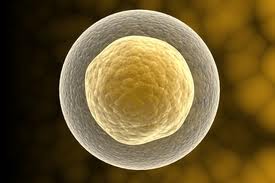Stem Cells and Regenerative Medicine - Ready for Prime Time?
/ The future looks promising for stem cell therapies in aesthetic medicine.
The future looks promising for stem cell therapies in aesthetic medicine.
The arguments for and against the use of stem cells for research and medical therapeutic applications have existed for decades and will no doubt increase in volume and intensity for some time to come. Vast amounts of public and private money are currently pouring into the research for these polarizing fields and a Google search on these topics will populate dozens of new articles not only domestically but also globally on a daily basis. The hopes of uncountable patients and their family and friends are intricately entwined on unlocking possible therapeutic applications to cure a myriad of maladies from spinal cord injuries, Alzheimer’s disease, diabetes and heart failure to rare genetic disorders that claim the lives of children daily. In short, stem cell research and regenerative medicine are in the early explosion phase of discovery, application, and no doubt ongoing controversy.
Initial shockwaves of fear and objection arose partly from the need for using embryonic stem cells for this research. Fortunately, it is looking more promising that we can use easily obtainable cells from existing and abundant adult tissues and engineer highly selected cells from these tissues to become culturable and guidable stem cells. Ideally, this would negate the use of embryonic stem cells and eliminate at least this one-of-many passionately debated aspects of controversy (there are many!). To date, cells from bone marrow, skin, and adipose amongst others are being used to isolate adult stem cells, and from these it is hoped that we can “reverse engineer” them into pluripotent cells that can be used to generate selected tissue types for clinical use. How many of us don’t have an extra area or two of excess fat that could potentially be used to save our life at some point in the future? While we don’t have proven reliable human applications as yet, the future does look promising. I am seeing more and more presentations at our plastic surgery meetings on stem cell research and regenerative medicine and the buzz and excitement are palpable. It is important to note that all involved seem to share a sense of cautious optimism and emphasize the need for careful control over the research and applications. The FDA is very involved with all aspects of clinical use of stem cells as the field evolves and becomes more complex.
The future is exciting for stem cells and regenerative medicine. I fully agree with careful oversight and deliberate planning and control as research progresses. I follow the fields closely and am hopeful that in the near future we can offer hope to those patients with difficult illnesses and medical conditions that are currently not largely treatable. And all the better if we can obtain easily available and harvestable tissues to affect the research and clinical applications. Now I invite a lively and constructive discussion from the readers!







